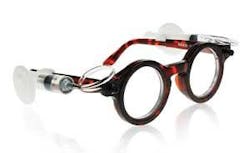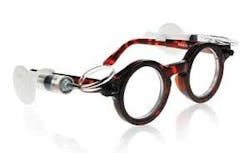End Result
OCT’s “significant contribution” to ophthalmology continues to grow
Every day in clinical practice around the world, optical coherence tomography is making a significant contribution to the diagnosis and treatment of vitreous and retinal pathology,” wrote Richard L. Lindstrom, MD, in an article for OSN SuperSite, an information Web site serving ophthalmologists. “No retinal specialist practices without this tool, and it is finding its way into the offices of many anterior segment surgeons and comprehensive ophthalmologists as well,” explained Lindstrom, in his article, “Usefulness of OCT expanding beyond retinal specialty” (osnsupersite.com/view.aspx?rid=39210).
Lindstrom, founder and attending surgeon of Minnesota Eye Consultants (Minneapolis, MN) and Adjunct Professor Emeritus at the University of Minnesota Department of Ophthalmology, is a board-certified ophthalmologist. He uses OCT as a screening tool for subtle macular changes that can reduce vision after cataract surgery, and says the technique has often enabled him to diagnose subtle macular changes and to follow those patients at significant risk of developing exudative age-related macular degeneration or diabetic macular edema-enabling quick referral to a specialist.
Lindstrom says his view of the future is this: “Increasing refinement in OCT to the point where we can make diagnosis at the cellular level, leading to an OCT either present in every ophthalmologist’s office or readily available nearby.”
To read the full version of this article please click here to login
Inexpensive, adjustable eyeglasses aid Third World citizens
A majority of people in wealthy countries rely on prescription eyeglasses. But in developing nations, where the need is just as great, only 5% of those who need glasses wear them. The cost of eye care and a lack of qualified optometrists make resources unavailable.
Now, an invention by Oxford University professor Joshua Silver is giving thousands of people in underdeveloped areas the sight advantages others enjoy. Silver’s self-refraction glasses are inexpensive to manufacture and do not require the involvement of an optometrist. The frame holds lens chambers bound by thin polyester membranes. Small syringes on each arm of the frame hold a few cubic centimeters of a silicon oil that has a refractive index of about 1.6, according to Silver. The wearer uses dials on the syringes to add fluid to the lenses or remove it. “The surface curvature changes as the fluid is pumped in and out,” Silver explains. “You change the focusing power by changing the curvature.” Thus, the same platform works for both far- and near-sighted people. Once the wearer has adjusted the lenses satisfactorily, the syringes can be removed.
Successful adjustment requires the wearer to follow a specific procedure–and a recent study showed that 80% of those who followed it achieved vision correction sufficient to pass a driver vision test.
About 30,000 pairs of the glasses have been distributed in developing nations, with funding from the World Bank and the U.S. government. A research center at the University of Oxford: The Centre for Vision in the Developing World (vdw.ox.ac.uk/index.htm) is dedicated to bringing vision correction to parts of the world that lack it.
Laser clinic offers DNA hair-loss testing
Hair Loss Control Clinic (HLCC; Latham, NY), provider of laser treatment solutions for hair loss, is now offering DNA testing to determine whether individuals are susceptible to androgenetic alopecia–male or female pattern hair loss–long before the symptoms begin showing. If the DNA tests indicate the individual is susceptible to hair loss, a laser hair treatment regimen can be started early to prevent hair loss before it happens. For example, a woman who tests a strong positive may have an almost 98% chance of severe hair loss, and a man might have a 70% chance of going bald.
“The best time to treat hair loss is before it occurs and now we have a tool that basically predicts your hair loss in time for us to stop it or slow it down with a laser hair therapy program,” said Bill Blatter, President and CEO of HLCC.
HLCC has 91 locations worldwide, most of which offer the DNA hair test.

